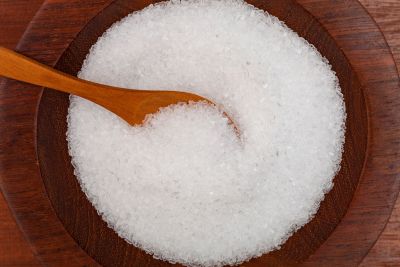Is Epsom Salt Good for Plants?
Yes, there seem to be good, relevant reasons for using Epsom salts for plants. Epsom salt helps improve flower blooming and enhances a plant’s green color. It can even help plants grow bushier. Epsom salt is made up of hydrated magnesium sulfate (magnesium and sulfur), which is important to healthy plant growth.
Why Put Epsom Salts on Plants?
Why not? Even if you don’t believe in its effectiveness, it never hurts to try it. Magnesium allows plants to better take in valuable nutrients, like nitrogen and phosphorus. It also helps in the creation of chlorophyll, which is vital for photosynthesis. In addition, magnesium greatly improves a plant’s ability to produce flowers and fruit. If the soil becomes depleted of magnesium, adding Epsom salt will help; and since it poses little danger of overuse like most commercial fertilizers, you can use it safely on nearly all your garden plants.
How to Water Plants with Epsom Salts
Want to know how to water plants with Epsom salts? It’s easy. Simply substitute it for regular watering either once or twice a month. Keep in mind that there are a number of formulas out there, so go with whatever works for you. Before applying Epsom salt, however, it’s a good idea to have your soil tested to determine whether it’s deficient of magnesium. You should also be aware that many plants, like beans and leafy vegetables, will happily grow and produce in soils with low levels of magnesium. Plants like roses, tomatoes, and peppers, on the other hand require lots of magnesium, and therefore, are more commonly watered with Epsom salt. When diluted with water, Epsom salt is easily taken up by plants, especially when applied as a foliar spray. Most plants can be misted with a solution of 2 tablespoons (30 mL) of Epsom salt per gallon of water once a month. For more frequent watering, every other week, cut this back to 1 tablespoon (15 mL). With roses, you can apply a foliar spray of 1 tablespoon per gallon of water for each foot (31 cm.) of the shrub’s height. Apply in spring as leaves appear and then again after flowering. For tomatoes and peppers, apply 1 tablespoon of Epsom salt granules around each transplant or spray (1 tbsp. or 30 mL per gallon) during transplanting and again following the first bloom and fruit set.
